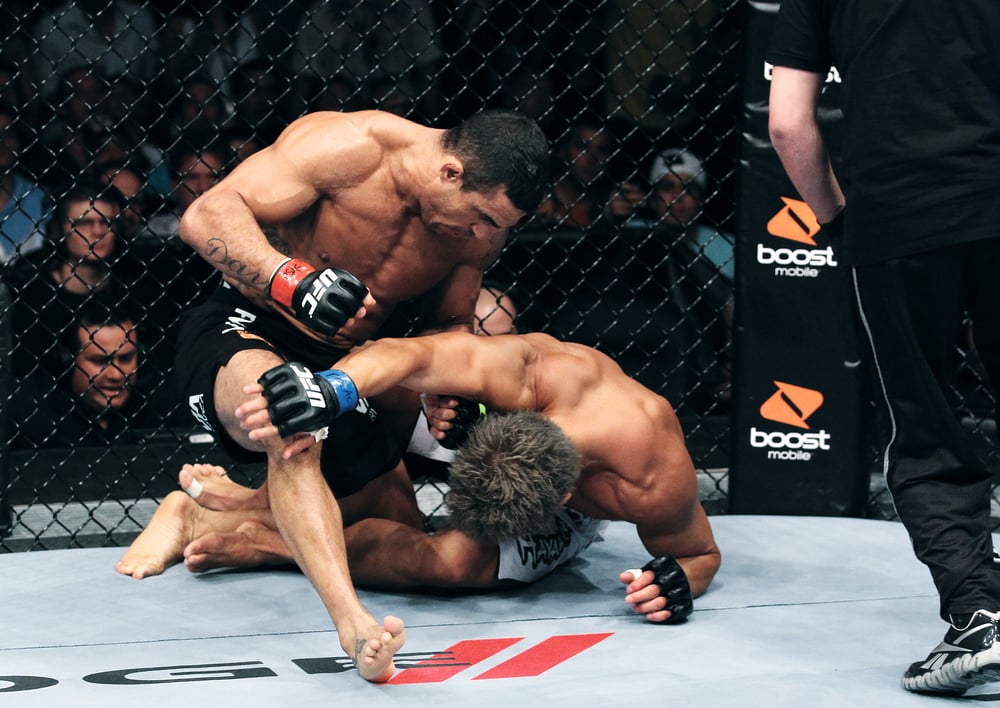
Issue 081
November 2011
FO’s resident referee, Mario Yamasaki, clears the air regarding strikes to the back of the head
Mario Yamasaki
UFC referee
An MMA referee for 12 years, Mario has black belts in judo and BJJ and refereed the jiu-jitsu Pan-Am Games
After a series of high-profile incidents involving punches to the back of the head inside the Octagon I have decided to concentrate this issue’s column on the subject of rabbit punching in mixed martial arts.
Rabbit punching is a term associated with boxing and means punches to the back of the head. The name of this type of blow is derived from the use of the technique by hunters to kill rabbits with a quick, sharp strike to the rear of the skull, usually with a blunt object. Considering the likelihood for danger, this is a punch that is illegal in both boxing and in MMA.
The Unified Rules
The Unified Rules of MMA were created to enhance the sport and provide safety for the fighters, to identify which techniques are prohibited and give the referee the terms to enforce the match. Strikes to the back of the head have always been illegal with respect to the Unified Rules of MMA.
The problem in the past had been trying to identify clearly what was considered the back of the head. Some commissions originally thought that a ‘headphone’ definition applied, meaning that if everything behind the head-band of an imaginary set of headphones would be illegal. Other commissions described a ‘Mohawk’ pattern, which went from the top of the skull to the base of the neck, as being a prohibited area.
In New Orleans in 2009 the Association of Boxing Commissions, at their annual conference, clarified the definition and reached a compromise between both definitions.
Under the current Unified Rules for MMA: “Strikes behind the crown of the head and above the ears are not permissible within the Mohawk area. Strikes below the top of the ear are not permissible within the nape of the neck area.”
I hope you aren’t too confused by now.
As a general rule of thumb, if a fighter is able to touch the ear of his opponent with his fist then his strikes are legal. Keep in mind this is just a general guideline designed to help a referee make a judgment call during the fight, and that a referee needs to keep in mind the size of the fist.
Remember, as I mentioned in previous columns, the mandate of the referee is fighter safety, and assessing fouls falls within this mandate.
The unique nature of MMA allows a fighter to take an opponent’s back and this position is one where a referee needs to monitor potential strikes to the back of the head, which can be common from this position.
Generally what happens is a multiple strike overload occurs where the attacking fighter is unleashing a series of strikes in succession. Where a referee gets into trouble is when legal strikes are combined with illegal strikes and are layered together in succession together. Keep in mind that this is occurring fast, and an official needs to recognize which shots are legal and which shots are illegal.
A fighter who moves into the strike is responsible for their own actions. Since fighters are unable to control when their opponent turns their head, referees usually give fighters some leeway when it comes to strikes to the back of the head, unless it a serious blow, or appears to be deliberately intentional.
During the backstage rules meeting with the fighters I discuss with them how I am going to call the fight. As a general rule, I advise them that the first strike to an illegal target may be viewed as being accidental, but if a second shot occurs it will be a foul. Again this is a general guideline and each situation will be judged accordingly, and with the safety of the fighter in mind.
Vitor Belfort vs Yoshihiro Akiyama, UFC 133
There has been some discussion about this fight, in which I officiated, with respect to the stoppage of the fight and whether there were strikes to the back of the head that ended the fight. So here is my assessment of the action.
Akiyama was already in trouble after Belfort had landed several strikes using his strong left hand. Akiyama then went to the canvas with Belfort pursuing him with strikes. I recognized that Akiyama was in trouble and was not defending himself.
In my mind the fight is already over and, despite being positioned close to both fighters and already initiating action to stop the fight, Belfort landed a quick shot close to the back of the head of Akiyama. He followed up with another shot, which was to the back of Akiyama’s head. It goes to show you that even when you are close to the action and recognize what is happening that this sport moves incredibly fast.
At this point I determined that the blow to the back of the head was illegal. However, the fight was in the process of being stopped at the time, Akiyama was already out. This is a good example of a fight which is difficult to discuss, because many would argue that Belfort should have been penalized for this action. The commission has the final authority on all fights and all appeals, and in this case I will leave it up to them.
...










